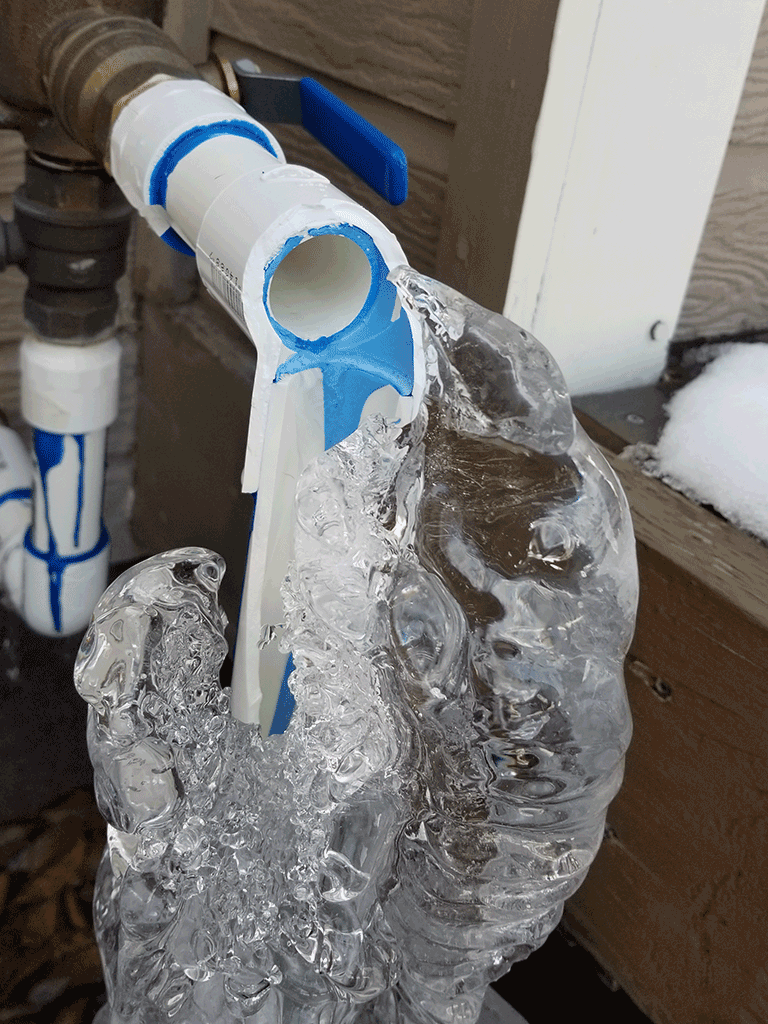Guidance for Avoiding Frozen Pipes in Winter: Specialist Insights
Guidance for Avoiding Frozen Pipes in Winter: Specialist Insights
Blog Article
The content directly below on the subject of Prevent Frozen Pipes is seriously enjoyable. Give it a try and draw your own conclusions.
:strip_icc()/snow-outdoor-faucet-pipes-4af65d1e5e904fb1aa7bf74071fe5d89.jpg)
Winter can damage your plumbing, specifically by freezing pipelines. Here's exactly how to prevent it from taking place and what to do if it does.
Intro
As temperatures drop, the risk of icy pipes increases, potentially causing expensive repair work and water damage. Recognizing how to prevent frozen pipes is essential for home owners in chilly climates.
Avoidance Tips
Insulating prone pipelines
Cover pipes in insulation sleeves or use warm tape to secure them from freezing temperatures. Concentrate on pipelines in unheated or external locations of the home.
Heating techniques
Maintain interior rooms appropriately heated, particularly locations with plumbing. Open closet doors to permit cozy air to circulate around pipelines under sinks.
Exactly how to determine frozen pipes
Try to find decreased water circulation from faucets, uncommon smells or sounds from pipelines, and noticeable frost on exposed pipelines.
Long-Term Solutions
Structural changes
Take into consideration rerouting pipelines far from outside walls or unheated areas. Add added insulation to attic rooms, cellars, and crawl spaces.
Updating insulation
Invest in top quality insulation for pipelines, attics, and wall surfaces. Appropriate insulation helps keep regular temperature levels and decreases the threat of icy pipelines.
Securing Exterior Plumbing
Yard tubes and outdoor taps
Disconnect and drain pipes yard hose pipes prior to winter. Set up frost-proof faucets or cover outside taps with shielded caps.
Recognizing Icy Pipes
What causes pipelines to freeze?
Pipes ice up when exposed to temperature levels below 32 ° F (0 ° C) for expanded durations. As water inside the pipelines ices up, it broadens, putting pressure on the pipeline wall surfaces and possibly causing them to rupture.
Risks and problems
Frozen pipelines can cause supply of water interruptions, building damages, and pricey repair services. Ruptured pipes can flood homes and create substantial structural damage.
Signs of Frozen Pipeline
Recognizing icy pipes early can stop them from breaking.
What to Do If Your Pipelines Freeze
Immediate actions to take
If you suspect frozen pipes, keep taps open up to soothe stress as the ice melts. Use a hairdryer or towels taken in warm water to thaw pipelines slowly.
Conclusion
Preventing frozen pipes requires proactive actions and fast actions. By recognizing the reasons, signs, and safety nets, home owners can safeguard their pipes during winter.
5 Ways to Prevent Frozen Pipes
Drain Outdoor Faucets and Disconnect Hoses
First, close the shut-off valve that controls the flow of water in the pipe to your outdoor faucet. Then, head outside to disconnect and drain your hose and open the outdoor faucet to allow the water to completely drain out of the line. Turn off the faucet when done. Finally, head back to the shut-off valve and drain the remaining water inside the pipe into a bucket or container. Additionally, if you have a home irrigation system, you should consider hiring an expert to clear the system of water each year.
Insulate Pipes
One of the best and most cost-effective methods for preventing frozen water pipes is to wrap your pipes with insulation. This is especially important for areas in your home that aren’t exposed to heat, such as an attic. We suggest using foam sleeves, which can typically be found at your local hardware store.
Keep Heat Running at 65
Your pipes are located inside your walls, and the temperature there is much colder than the rest of the house. To prevent your pipes from freezing, The Insurance Information Institute suggests that you keep your home heated to at least 65 degrees, even when traveling. You may want to invest in smart devices that can keep an eye on the temperature in your home while you’re away.
Leave Water Dripping
Moving water — even a small trickle — can prevent ice from forming inside your pipes. When freezing temps are imminent, start a drip of water from all faucets that serve exposed pipes. Leaving a few faucets running will also help relieve pressure inside the pipes and help prevent a rupture if the water inside freezes.
Open Cupboard Doors
Warm your kitchen and bathroom pipes by opening cupboards and vanities. You should also leave your interior doors ajar to help warm air circulate evenly throughout your home.

Hopefully you enjoyed reading our topic about How To Avoid Freezing Pipes. Thank you for finding the time to browse our piece. Sharing is caring. Helping others is fun. Many thanks for your time. Kindly stop by our website back soon.
Click Here To Find Out More Report this page